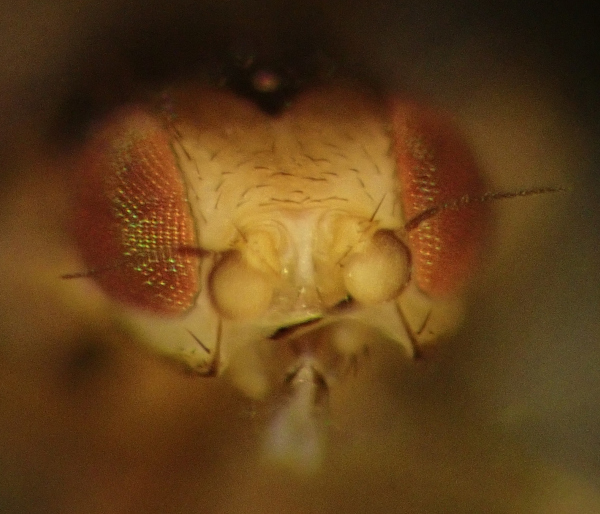Diptera.info :: Identification queries :: Diptera (adults)
Who is here? 1 guest(s)
|
Chloropidae : stuck with genus
|
|
| rumsais_blatrix |
Posted on 11-02-2021 12:11
|
|
Member Location: Posts: 33 Joined: 05.02.21 |
Collected in southern France near Montpellier, in a garrigue environment, in June 2020. I did not succeed keying out something that makes sense... It shares features with Trachysiphonella, but it does not look like the species supposed to be in France. rumsais_blatrix attached the following image:  [158.35Kb] |
|
|
|
| rumsais_blatrix |
Posted on 11-02-2021 12:12
|
|
Member Location: Posts: 33 Joined: 05.02.21 |
Side view.
rumsais_blatrix attached the following image:  [144.67Kb] |
|
|
|
| rumsais_blatrix |
Posted on 11-02-2021 12:13
|
|
Member Location: Posts: 33 Joined: 05.02.21 |
There seems to be a carina somewhat developed between the antennae.
rumsais_blatrix attached the following image:  [196.47Kb] |
|
|
|
| rumsais_blatrix |
Posted on 11-02-2021 12:14
|
|
Member Location: Posts: 33 Joined: 05.02.21 |
Wing
rumsais_blatrix attached the following image:  [130.96Kb] |
|
|
|
| Paul Beuk |
Posted on 11-02-2021 12:24
|
|
Super Administrator Location: Netherlands Posts: 19375 Joined: 11.05.04 |
It is a rather dark specimen but seems to be Trachysiphonella scutellata nonetheless. Also see the specimens on this page: https://v3.boldsy...xid=469884.
Paul - - - - Paul Beuk on https://diptera.info |
| rumsais_blatrix |
Posted on 11-02-2021 23:30
|
|
Member Location: Posts: 33 Joined: 05.02.21 |
Thanks a lot. I am a bit confused. In my previous post on Trachysiphonella, you mentioned that scutellata has more than one dark spot on the pleura, like here. However, in the following paper there is a picture of Trachysiphonella ruficeps and it has three dark spots, and it looks alike my specimens (at least the light one): https://nph.onlinelibrary.wiley.com/doi/full/10.1111/nph.13210 Are there other features that I could investigate to distinguish the two species? |
|
|
|
| Paul Beuk |
Posted on 12-02-2021 11:44
|
|
Super Administrator Location: Netherlands Posts: 19375 Joined: 11.05.04 |
I see your point. Let's wait for Michael von Tschirnhaus. 
Paul - - - - Paul Beuk on https://diptera.info |
| rumsais_blatrix |
Posted on 26-02-2021 22:00
|
|
Member Location: Posts: 33 Joined: 05.02.21 |
I now have inspected many specimens (from traps) of Trachysiphonella, and the differences between the specimen of the present post and the specimen of this post: https://diptera.info/forum/viewthread.php?forum_id=5&thread_id=99207 appear to be consistent. They are most likely two distinct species. If someone knows about a detailed description of the two western European species (T. scutellata and T. ruficeps), let me know, so that I can figure out which is which. Thanks |
|
|
|
| von Tschirnhaus |
Posted on 18-03-2021 12:15
|
|
Member Location: Bielefeld, Germany Posts: 450 Joined: 04.11.07 |
Chloropidae, Oscinellinae: Trachysiphonella spec. This specimen has very deep gena(e) (jowl(s)). Genae of T. ruficeps and R. scutellata normally are narrower (but variable in both species). The dark spots on the pleuron are not species-specific. All species are very variable concerning their body colour. T. scutellata normally has two lateral setae on each side of the scutellum, T. ruficeps only one. On average T. ruficeps is the smaller species. Without studying the male genitalia an identification is not trustable. On Sardinia I collected also T. pori which may also occur in France and which can easily be identified by its much narrower and longer male cerci. Further species in Saudi Arabia, Asia, South Africa ...
Edited by von Tschirnhaus on 16-11-2022 19:30 |
| Jump to Forum: |















